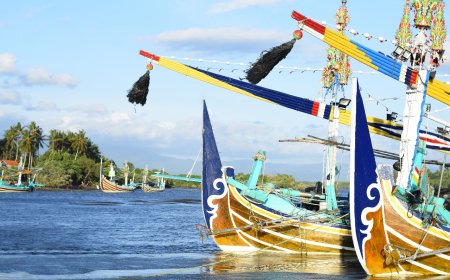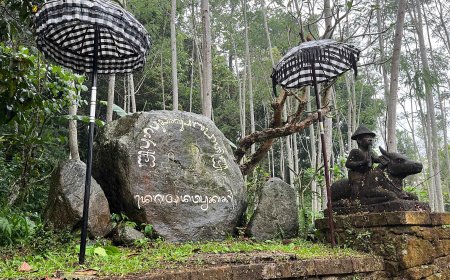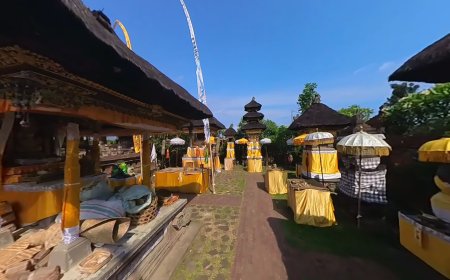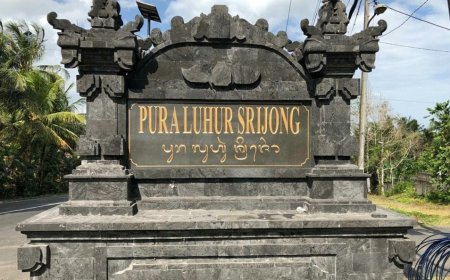The Historical Footprints of Pura Dalem Hyang Soka: The Oldest Temple in Penarungan Village
The historical trail of Pura Dalem Hyang Soka, the oldest temple in the village of Penarungan, Bali, reveals the evolution of the meaning of the word "Pura" and its crucial role as a sacred place connecting humans with the divine. This temple holds historical significance and is believed to bring good fortune, serving as a venue for various ceremonies and even possessing healing properties. Furthermore, Pura Dalem Hyang Soka acts as a spiritual stronghold safeguarding the Penarungan village. Despite various names being mentioned, the name Pura Dalem Hyang Soka has been steadfastly preserved through the uncovered historical records.
Before delving into the existence of Pura Dalem Hyang Soka, it is important to first understand the meaning of Pura. The word Pura carries various meanings and has undergone changes in terminology and significance. In India, the birthplace of Hinduism, Pura is known as Mandir, Dwargrha, and similar terms. In Bali, before the reign of the Majapahit, the term Pura was referred to as Ulon 'hulu,' later transforming into Hyang Api, Hyang Tanda, Hyang Karimama, and Hyang Soka. These Hyang names are frequently mentioned in ancient Balinese inscriptions. With the passage of time, Hyang evolved into Kahyangan or Parhyangan. The ancient Javanese language adopted the word Pura from Sanskrit. The term Pura encompasses various meanings, such as city, fortified city, palace, royal residence, capital, and kingdom.
Specifically regarding Pura named Hyang Soka, there are several temples in Bali that bear this name, including Pura Hyang Soka in the Banyuseri Buleleng customary village, Pura Hyang Soka in the Sakah village in Gianyar, Pura Dalem Hyang Soka in the Penarungan customary village, and Pura Hyang Soka in the Merita village in Karangasem. To provide clarification regarding the meaning of "Soka," in Pura Dalem Hyang Soka Penarungan, there is a Soka flower tree that grows within the temple's premises. This connection to the Soka flower tree may lead devotees who may not be aware of the origin of the word "Hyang Soka," which means "temple," to associate it with the name Pura Dalem Hyang Soka, derived from the large Soka flower tree growing in the vicinity of the temple.
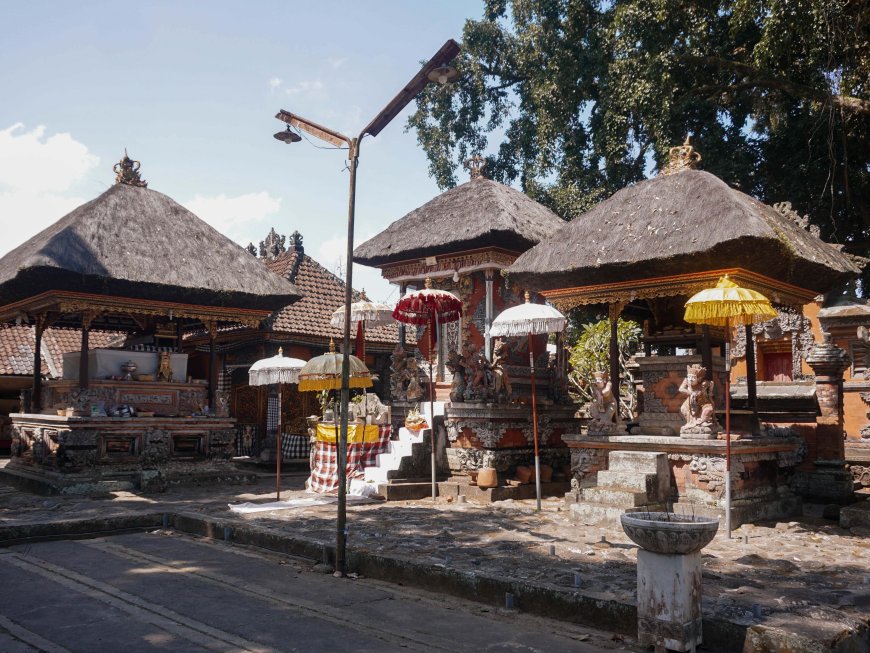
Utama Mandala Pura Dalem Hyang Soka (Photo Source: Author's Collection)
After the ancient Balinese kingdom was conquered by Majapahit forces in 1342, led by Mahapatih Gajah Mada, who later installed Dalem Sri Krsna Kepakisan as the ruler of Bali, the term "Pura" was used to refer to the king's palace, such as Sweca Pura, Istana Raja Gegel, Bandana Pura, Istana Raja Badung, Smara Pura Istana Raja Klungkung, Manga Pura Istana Raja Mengwi, and others. However, after the arrival of Dang Hyang Dwijendra in Bali, who became a Bhagawanta and advisor to Dalem Waturenggong's palace in the 17th century, the term "Pura" referring to the king's palace was replaced with "Puri." Consequently, since then, the term "Pura" has been used to refer to sacred places, while the words "Parhyangan" or "Kahyangan" are still used by some communities in specific regions of Bali to this day. According to the Compilation of Seminar Decisions on the Unity of Interpretation of Hindu Religious Aspects 1-XV, Pura is a sacred place used for worshipping Ida Sang Hyang Widhi Wasa in all of His manifestations and Atma Sidha Dewata (the Holy Ancestors' Spirits). Furthermore, the terms "Kahyangan" or "Parhyangan" are also used to refer to temples by some communities in Bali today. This aligns with the philosophy of temple construction, reflecting harmony with the environment in which the temple is built, as described in the Isanasiwagurupaddhai, III.12.16, as follows.
Prasadam yacchicva aktyatmakaam
Tacchaktyantaih syadvisudhadyaistu tatvaih
Saivi murtih khalu devalayakhyetyasmad
Dhyeya prathamam cabhipujya
The sloka above conveys the meaning that temples are constructed to seek the presence of Sang Hyang Siwa and Sakti, as well as the fundamental power/principles and all of their manifestations or forms, from the basic essential elements, such as Prthivi, up to their energy. The tangible form (material) of Sang Hyang Siwa represents the dwelling place of Sang Hyang Widhi. It emphasizes the importance of contemplation and worship of these divine entities.
Temples play a crucial role in connecting human life with Ida Sang Hyang Widhi Wasa in all aspects. This role arises because humans continually experience suffering and hardship throughout their lives, whether directly or indirectly. In such situations, humans always yearn for the divine and seek ways to convey their longing or present life's challenges. Because Ida Sang Hyang Widhi Wasa is considered supremely sacred, sacred places are constructed as a means to bridge the harmonious relationship between humans and the divine. Likewise, Pura Dalem Hyang Soka, located in Banjar Blungbang, Penarungan Village, Mengwi District, Badung, Bali, was built in response to the suffering, hardship, fertility, and pests that afflicted the people of Marita Karangasem Village in the Penarungan Pradesa. Originally, the concept of the Three Kayangan encompassed the Desa Puseh and Dalem, symbolizing the Trimurti of Brahma, Vishnu, and Shiva. However, due to prevalent health issues among the Penarungan Pradesa community around the year Caka 1181 or 1259 AD, marked by numerous inscriptions from the Majapahit period, the term "Dalem" was added to the name Hyang Soka, thus becoming Dalem Hyang Soka.
As the people of Marita did not continue their lives in Pra Desa Penarungan, the governance of Pra Desa Penarungan was continued by the Trah Gusti Kamasan. In response to this situation, the community of Merita Karangasem also constructed a temple with the same name as the one in Pra Desa Penarungan. The temple in the village of Merita serves as a means of remembrance or commemoration. The construction of this temple as a form of commemoration illustrates the understanding of the Merita community regarding the importance of comprehending and appreciating the history (JASMERAH) that was once undertaken to achieve harmony between human life, nature, and the divine. Therefore, it is not surprising that Pura Dalem Hyang Soka, located in the village of Merita Karangasem, is considered an extension of Pura Dalem Hyang Soka in Penarungan. In addition to this temple, there are also other temples that serve as practice grounds for Pura Dalem Hyang Soka in Penarungan, such as Pura Gunung Agung Banjar Guming Penarungan.
Pura Dalem Hyang Soka, as the oldest temple in Penarungan Village, holds a profoundly sacred position in the hearts of the local community. Most of its devotees come from the Arya Kenceng families, and currently, their number has reached 120 families, originating from various regions across Bali, not just from Penarungan. Besides its invaluable historical significance, this temple is also believed to bring good fortune. As a result, it is utilized by various segments of the community for a wide range of ceremonies, including healing rituals, requests for agricultural fertility, the enhancement of artistic inspiration (taksu), and even considerations related to leadership.
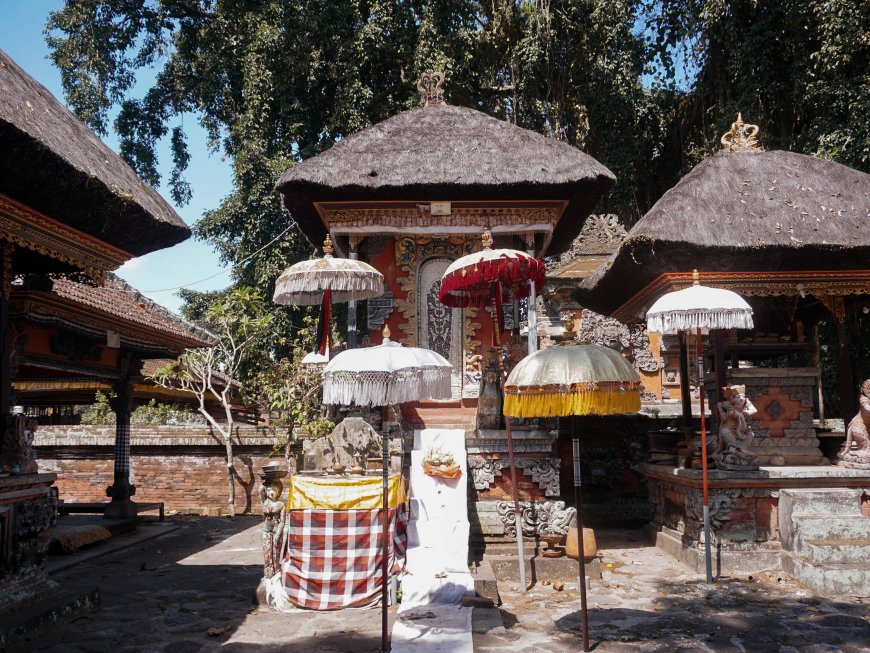
Luhur Temple (Photo Source: Author's Collection)
The agricultural and livestock-based livelihood of the Penarungan and surrounding communities has led to numerous requests related to these sectors at this place. For example, when livestock goes missing, people seek assistance at this temple, and their livestock often return. They also seek blessings for agricultural fertility and protection from pests. Pura Dalem Hyang Soka is also believed to possess healing properties, where its sacred water, known as tirtha aswannya is used as medicine, along with tirta pemuspan used for purification ceremonies. Initially, people came to this temple to request healing through the power of the "sakti" tirtha, and some of them recovered and became regular devotees. Others visit to seek blessings for matters of governance, and through the tirtha provided to the devotees, various illnesses, including severe conditions like strokes, have been known to heal. This has been evidenced by the recovery of those seeking remedies here. Similarly, individuals who seek blessings for job opportunities and positions also visit the temple. Pura Dalem Hyang Soka is regarded by the local community as one of the spiritual fortresses protecting the southern region of Penarungan Village. In addition to the Village Temple (Pura Desa), Pura Puseh, and Pura Dalem Jati, there is protection from the west embodied by Pura Manik Mayun, from the north by Pura Wrespati, and from the east by Pura Gunung Agung.
Pura Dalem Hyang Soka features four "odalan" ceremonies. The first odalan takes place at the highest shrine and falls on Buddha Cemeng Merakih, which is the main ceremony held at Pura Dalem Hyang Soka Gede. On Budha Kliwon Pegatwakan, the Petapakan Ratu Mas ceremony is celebrated, followed by the Purnama Jyesta odalan at Ratu Ayu, and finally, on Tumpek Klurut, the "piodalan" is held at Ratu Ngurah Bolong. When examining its structure, the shrines in the temple are ancient. In fact, based on observations and interviews with the temple's caretaker, the courtyard is still paved with river stones. This characteristic is acknowledged by Jro Mangku Ari, who also serves as the leader of the Ratu Mas congregation. The temple's buildings, especially the courtyards, remain ancient, with only a few rehabilitations, primarily focusing on the decaying wooden elements. The temple is also associated with a sacred spring known as "Beji," as there is a small lake that never dries up, referred to as "Bebengan." This small lake has carried its mystical aura from the past to the present and is ritualistically celebrated every six months.
Prior to historical research, many people had various opinions regarding the name of this temple. Some referred to it by different names such as Pura Kentel Gumi, Pemutaran Jagat, and so on. However, through the uncovered historical records, the name Pura Dalem Hyang Soka has been consistently maintained.









